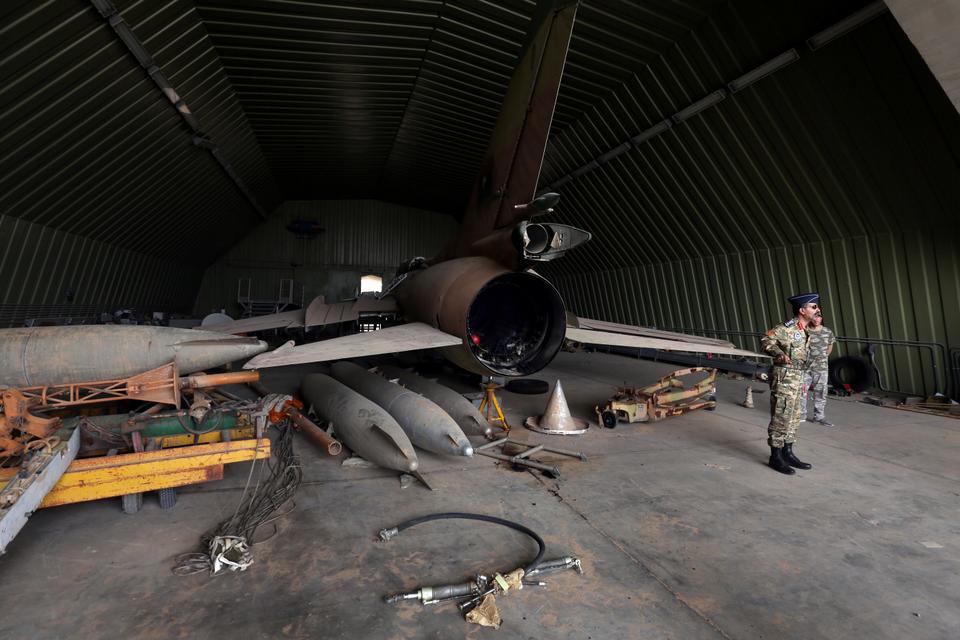Libyan warlord Khalifa Haftar assumed that Ankara’s support of the UN-recognised Tripoli government would not stand in his way. That turned out to be a miscalculation.
When Libyan warlord Khalifa Haftar launched his attack on the legitimate Government of National Accord (GNA) in early April last year, he grandly claimed that no force could stop his capturing of the capital Tripoli - the ultimate prize of the civil war.
Backed by Russia, France, the UAE, Saudi Arabia and Egypt, as well as being emboldened by thousands of mercenaries recruited for services to him across Africa, Haftar’s so-called Libyan National Army (LNA), based in Benghazi, in the east of the country, pounded the capital’s suburbs with both aerial and artillery attacks.
Haftar believed that the GNA, who can only count on Turkey, Italy and Qatar as allies, could not resist a long siege.
But it appears that Haftar has vastly miscalculated the determination of Ankara. Its drones are operated by the Libyan army, but it has also recently shifted the war in favour of the Tripoli government and in doing so, has helped GNA forces defeat Haftar on various battlefields across the country’s crucial western and central territories.
“You have to understand the Libyan geography. Libya is a vast country with open spaces and semi-desert areas even in coastal areas where no one basically can hide troop movements,” said Salah Bakkoush, a Libyan political analyst and a former advisor to the High Council of the Libyan state.
“In this case, you need very much air cover [in order to survive militarily]. If you do not have air cover, you will be easily hit by the opposing side [with a better air force] . That’s what has happened to us until we got the Turkish drones,” Bakkoush told TRT World.
It’s a point that has also been publicly communicated by the GNA’s top officials.
“The Turks saved us just in time,” the GNA Interior Minister, Fathi Bushagha, said last year in reference to the Turkish drones that have come to Tripoli’s aid.
Before the Turkish drone assistance, Haftar’s own air force, supported by the UAE, Egyptians and Russians, “wreaked havoc on the GNA forces with heavy casualties,” Bakkoush said.
“The introduction of (Turkish) drones with the experience being gained in Idlib and other parts of Syria was very effective, countering Haftar’s air force and allowing the GNA to use its advantage in terms of troops numbers and experience,” Bakkoush opined.
In early March, during Operation Spring Shield in Syria’s Idlib, which aimed to protect Turkish observatory posts in de-escalation zones and to prevent any bloodshed in the region, Ankara showed its military might via its drone fleet against Assad regime forces.
According to Bakkoush, it was in late 2019 that the Turkish drones began arriving in Libya.
“I know the fact that Turkish military experts have trained Libyans on how to fly these drones since December or January,” he said.
Like Bakkoush, other experts have been sharing their thoughts on how crucial air superiority will ultimately prove in determining the outcome of the Libyan civil war.
“The GNA has built its recent military victories, which have reclaimed nearly all of western Libya from Haftar’s forces, around the support of Turkish air defence systems and a drone campaign targeting Haftar’s bases and supply lines,” wrote Tarek Megerisi, a policy fellow with the North Africa and Middle East programme at the European Council on Foreign Relations, in a recent article.
Since April, GNA forces have recaptured a number of cities between Tripoli and the Tunisian border, putting the LNA in a precarious position in terms of its western operations.
This week has seen Haftar’s militants expelled from al-Watiya airbase, the headquarters of the LNA’s western operations, and the largest airbase across Western Libya.
Some satellite images released by ImageSat International, have shown how a Turkish UAV attacked a Russian Pantsir air-defence system deployed to the base.
According to another report, the GNA, with the help of Turkish UAVs, have also destroyed several other Pantsir systems, raising questions about the efficacy of the Russian air-defence system.
Under the protection of high-tech Turkish drones, the GNA has continued to march against Haftar’s militias.
Tarhuna, a Haftar stronghold, has also been under the siege of GNA forces for a while. If Tarhuna falls into the hands of the pro-Tripoli alliance, the warlord will lose his hold over central and western Libya.
“Turkish military support has driven the UN-backed Government of National Accord (GNA) to sweeping victories that have effectively killed off Field Marshal Khalifa Haftar’s hopes of conquering Tripoli, while creating significant fractures within his camp,” opined Megerisi, in his assessment of the damage done to the warlord.
“Unless he can regain air superiority, he will only continue to lose,” he added.
Alarmed by Haftar’s recent defeats, Russia has reportedly sent more warplanes to support Haftar, who continues to set his sights on being the next Gaddafi of Libya.
Moscow has sent six MiG-29 fighter jets and two Su-24 attack planes to the LNA-controlled al Jufra airbase, escalating tensions further in the country, according to various reports.






